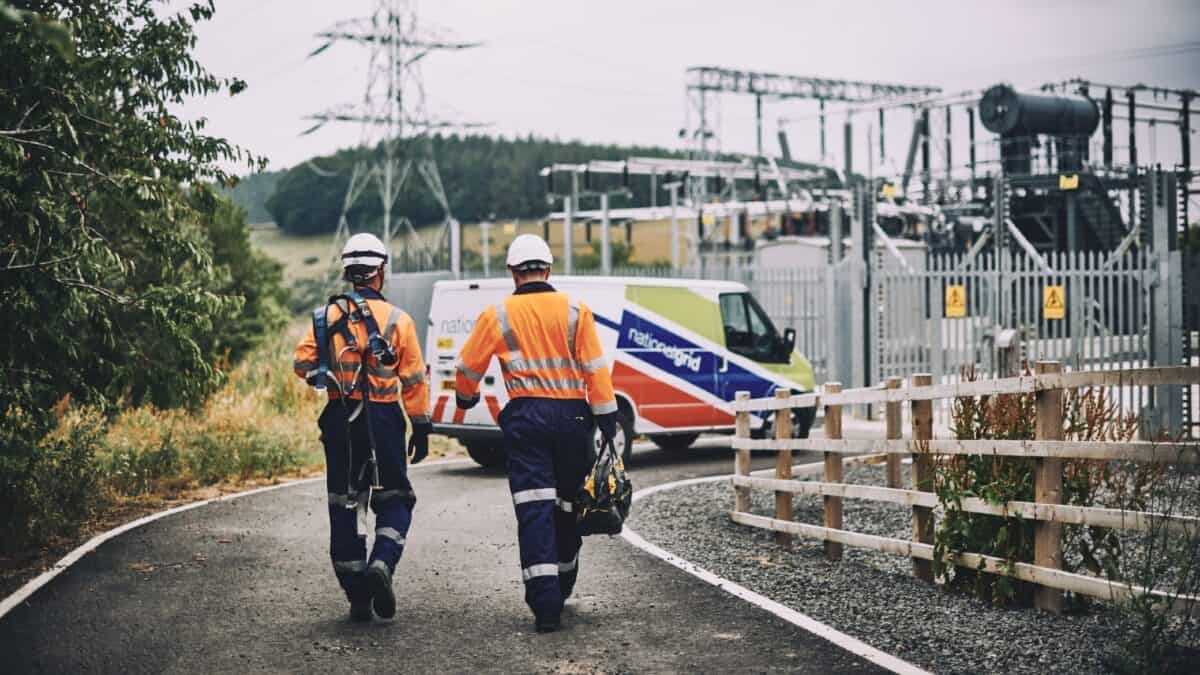The National Grid (LSE: NA.) share price has fallen from 1,160p to 980p over the last six months. That’s a drop of about 15.75%, which is noticeably more than the FTSE 100‘s 5% decline over the same period.
What’s going on here? And could this be a chance for me to add to my holding?
Low beta
As a utility stock, it’s pretty rare that National Grid falls significantly more than the wider market.
We can see this through its low beta score. Essentially, this is a measure of how volatile or reactive a stock is to overall market movements. A value of 1 indicates movement similar to the index, while below 1 is considered less volatile and above 1 more.
National Grid’s beta is 0.41, according to the Financial Times. An opposite example would be loss-making Ocado, which has a high beta of 1.38.
Bond proxy
The share price peaked back in May then started to dip after that. So what happened in May?
Well, that was when the Bank of England forecast that inflation (and therefore interest rates) would stay higher for longer than previously expected. This impacts National Grid in a couple of ways.
First, utilities companies generally have a lot of debt on the balance sheet. If interest rates are going to stay higher for longer, then raising and servicing debt at costlier rates could negatively impact future profits and dividend growth.
Second, utility stocks are seen as ‘bond proxies’. These are stocks with safe cash flows and predictable returns that often carry higher yields than the bond market.
However, income investors can now pick up similar yields from government bonds without risking capital loss from shares.
H1 results
Today (9 November), the company reported that half-year underlying operating profit was £1.8bn, down 15% year on year. It put this fall down to non-recurring items reported last year, including property land sales.
Statutory earnings per share fell from 33.4p to 28.8p. This was expected and the board declared an interim dividend of 19.4p per share (a 9% increase). This is 35% of the total 55.4p per share for 2023, and translates into a dividend yield of 5.7%.
Operationally, the green pivot to electricity from gas continued as it sold another 20% stake in National Gas Transmission. This means its asset base will move to around 75% electricity (up from 60% in 2021).
However, investing in clean energy infrastructure isn’t cheap. And net debt increased by £2.9bn to £43.9bn during the period.
This rising net debt is a worry in a higher rate environment. However, JP Morgan isn’t too concerned, saying back in May that its balance sheet is robust enough to invest up to 50% more on capital expenditure than currently projected with no risks to its credit rating.
A buying opportunity?
If and when interest rates fall (the market is anticipating this to start happening by the end of 2024), I’d expect the shares to recover lost ground. That’s not guaranteed, of course, and we have no idea about future central bank policy.
But the forward dividend yield for FY 2024 (starting in April) is around 6%. That looks appealing to me, I have to say. So I might pick up a few more shares before Christmas.







